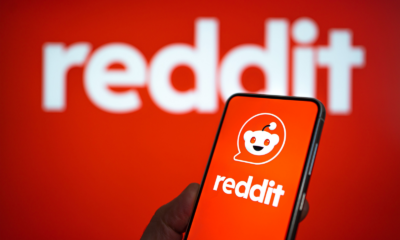SOCIAL
TikTok’s Latest Ad Targeting Provisions Reflect Increasing Revenue Pressure on the App

This has certainly raised some eyebrows among social media and privacy analysts.
Today, TikTok has started showing users in Europe, the UK and Switzerland new, in-app notifications informing them of changes to its data collection policies.
As you can see in these examples, shared by social media expert Matt Navarra, TikTok is changing the way it uses people’s data within its ad targeting systems.
More specifically, TikTok explains that:
“If you are 18 or over and in the EEA, the UK, or Switzerland, TikTok is making a legal change to how it will use your on-TikTok activity to personalize your ads. Under applicable data protection law, companies like TikTok must have a legal basis for processing your information. Historically, TikTok asked you for your “consent” to use your on-TikTok activity and off-TikTok activity to serve you personalized ads. From 13 July 2022 TikTok will rely on its “legitimate interests” as its legal basis to use on-TikTok activity to personalize the ads of users who are 18 or over.”
Note the inverted commas around ‘consent’. Seems like a red flag in itself.
Essentially, TikTok’s saying that if you have not consented to personalized ads in the past, which TikTok has to allow as part of the EU’s data privacy provisions, you’ll soon get a form of personalized ads anyway, based on your in-app activity. TikTok appears to be looking to use a technicality to maximize the performance of its ads, even among users who have opted out of personalized targeting.
Which is not surprising, I guess, but it does point to the increasing pressure within TikTok to start making real money from the app – which could result in more ads being shown to users over time.
While Twitter remains in ownership limbo, and Meta is diverting more and more of its resources into its metaverse push, it seems, on the face of it, like TikTok is currently the only platform on a clear upward trajectory, with usage counts rising, more ad dollars coming in, and new programs designed to capitalize on the rise of eCommerce and the Creator Economy.
TikTok, at least right now, is the clear winner in the social media sphere are present, right?
Well, maybe not as much as you’d think.
In recent months, TikTok owner ByteDance has faced a range of new challenges, including, most notably, a change in the regulations relating to data and algorithm usage in China.
As per The South China Morning Post:
“As with many Chinese tech companies, ByteDance’s prospects for profit growth in the domestic market remain clouded by tightened regulations. The central government has become more intrusive in regulating short video content. A new law governing the use of recommendation algorithms went into effect in March.”
CCP regulators, increasingly frustrated at their inability to reign in content within these apps, have sought to exert more control, which has extended to all of ByteDance’s key income sources.
That increased regulatory scrutiny has already wiped $100 billion from the value of ByteDance, forcing the company to consider sell-offs, staff cuts and more as it works to right the ship.
That pressure has also extended to TikTok, which, aside from these new data usage changes, has also been looking to enforce more China-centric style policies in terms of what’s expected of employees, and the content that it allows in the app.
ByteDance executive Joshua Ma, who had been working with TikTok’s UK eCommerce team, was recently forced to stand down after trying to impose tough working conditions on staff, in order to hasten its expansion.
As reported by The Financial Times:
“The launch of TikTok’s livestream shopping feature in the UK triggered a staff exodus from the London ecommerce team. Some staff complained of an aggressive company culture, with unrealistic targets and expectations that run counter to British working practices. Staff said they were expected to frequently work more than 12 hours a day, starting early to accommodate calls with China and ending late as livestreams were more successful in the evening, with overtime celebrated in internal communications. Some members of the ecommerce team were removed from client accounts after going on annual leave.”
Ma has also stated that he ‘doesn’t believe’ in maternity leave, which was also reported by The Financial Times, and which, incidentally, led to another issue on the content side, with TikTok then reportedly considering a move to censor keywords such as ‘Financial Times’, ‘Joshua Ma’, ‘maternity’, and ‘toxic’ on the platform in order to weaken the Financial Times report’s impact.
TikTok says that this ban was never implemented, but it highlights a fundamental concern within TikTok’s approach, in that a first instinct of at least some execs was to seek to silence criticism and dissent.
And you’d have to assume that at least some of this extends from the pressure being exerted on the company’s Beijing HQ.
How this new data usage policy relates is unclear, but with TikTok still only contributing around a third of ByteDance’s overall revenue, despite its global reach, you can imagine that ByteDance will be increasingly keen to squeeze more cash out of the app – and sooner, rather than later.
Which remains a challenge. ByteDance has seen big revenue success with the Chinese version of TikTok (called ‘Douyin’) by implementing eCommerce integrations, primarily driven by the take up of live-stream commerce in China.

According to ByteDance, over 20 million individual content creators and live-streaming hosts are now generating income from its apps, with total live shopping revenues in the Chinese market set to reach $423 billion this year. That’s more than the entire GDP of Ireland.
But the CCP’s crackdown is also impacting this element, with a bigger push to catch out influencers that haven’t been fulfilling their tax burden, which has already impacted many local streaming stars.
Add to this the fact that more brands are reconsidering their relationships with streamers (due to influencers demanding ever-more attractive deals), and the signs indicate that a reckoning is coming for the booming sector, which will again impact ByteDance.
It’s also not great for its push on the same with TikTok. Despite its popularity, TikTok is still developing a more equitable business process, especially in regards to ensuring its top stars get paid. TikTok’s expected to bring in around $11.6 billion in ad revenue this year, but it still doesn’t have an effective means to redistribute that to creators, which could, eventually, see many of them drift off to YouTube and Instagram instead.
TikTok is working on this, as noted, but a key focus, as it has been in China, is live-stream commerce, which it’s hoping will become a golden goose in western regions as well. But it hasn’t yet, and many Chinese trends haven’t translated to other markets in the past – and it could well be that TikTok creators just want to get paid for making videos, which they can’t do on TikTok, but they can via YouTube’s Partner Program.
Could that see more creators losing interest in the platform, and taking their audiences with them? That’s what eventually killed off Vine, and it remains a genuine possibility for TikTok as well. Which is why TikTok is desperate to get back into India, where it’s still banned, while it’s also looking to implement more ad options and tools to maximize its revenue intake while it can.
Essentially, when viewed on a broader scope, you can see how the increasing pressure on ByteDance is weighing on TikTok as well, and will likely force it to push forward with various revenue tools, including more ads, which poses a big risk for its growth potential.
That’s not to say TikTok’s on the way out just yet. Far from it, but there are signs there, and there are concerns that you may not recognize when looking at its growth numbers in isolation.
Maybe there are ways around it – maybe TikTok could get sold off and operate as a separate entity, or maybe its commerce options will be a hit and facilitate bigger business opportunities for the app.
Either way, you can expect to see more changes in the app as the pressure mounts on its parent business.

![Scale Efforts and Drive Revenue [Webinar] AI & Automation for SEO: Scale Efforts and Drive Revenue](https://articles.entireweb.com/wp-content/uploads/2024/10/Scale-Efforts-and-Drive-Revenue-Webinar-400x240.png)
![Scale Efforts and Drive Revenue [Webinar] AI & Automation for SEO: Scale Efforts and Drive Revenue](https://articles.entireweb.com/wp-content/uploads/2024/10/Scale-Efforts-and-Drive-Revenue-Webinar-80x80.png)






![Holistic Marketing Strategies That Drive Revenue [SaaS Case Study] Holistic Marketing Strategies That Drive Revenue [SaaS Case Study]](https://articles.entireweb.com/wp-content/uploads/2024/09/Holistic-Marketing-Strategies-That-Drive-Revenue-SaaS-Case-Study-400x240.png)
![Holistic Marketing Strategies That Drive Revenue [SaaS Case Study] Holistic Marketing Strategies That Drive Revenue [SaaS Case Study]](https://articles.entireweb.com/wp-content/uploads/2024/09/Holistic-Marketing-Strategies-That-Drive-Revenue-SaaS-Case-Study-80x80.png)


You must be logged in to post a comment Login